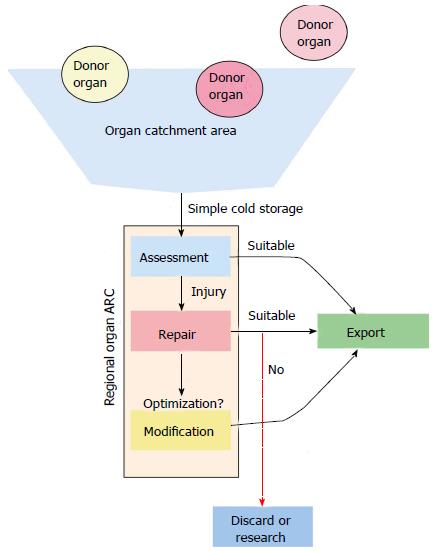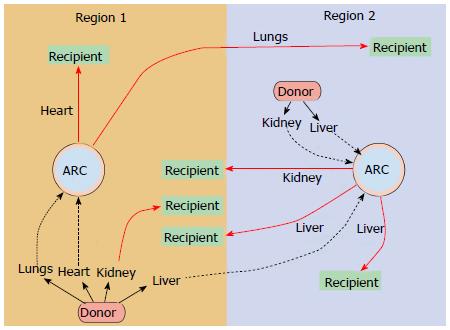Copyright
©2014 Baishideng Publishing Group Inc.
World J Transplant. Jun 24, 2014; 4(2): 40-42
Published online Jun 24, 2014. doi: 10.5500/wjt.v4.i2.40
Published online Jun 24, 2014. doi: 10.5500/wjt.v4.i2.40
Figure 1 A conceptualized Organ assessment and repair centers would receive donated organs (traditional and marginal donor quality) and assess their function.
During the assessment, the quality, viability, and function of the evaluated organ would be determined. There may be sub-specialization of assessment and repair center with local expertise in one or two organ types. ARC: Assessment and repair center.
Figure 2 Through the use of ex vivo organ perfusion, preservation times would be extended.
With this extension of total ischemic times, organs would have the opportunity to truly be matched with the recipient who would most benefit from that particular organ at that particular time. Occasionally, the allocation may be the current, traditional approach, where the allocation directly bypasses the ex-vivo assessment at the assessment and repair center and proceed directly to the recipient. (Adapted from Black and Whitson, 2013)[3]. ARC: Assessment and repair center.
- Citation: Whitson BA, Black SM. Organ assessment and repair centers: The future of transplantation is near. World J Transplant 2014; 4(2): 40-42
- URL: https://www.wjgnet.com/2220-3230/full/v4/i2/40.htm
- DOI: https://dx.doi.org/10.5500/wjt.v4.i2.40










